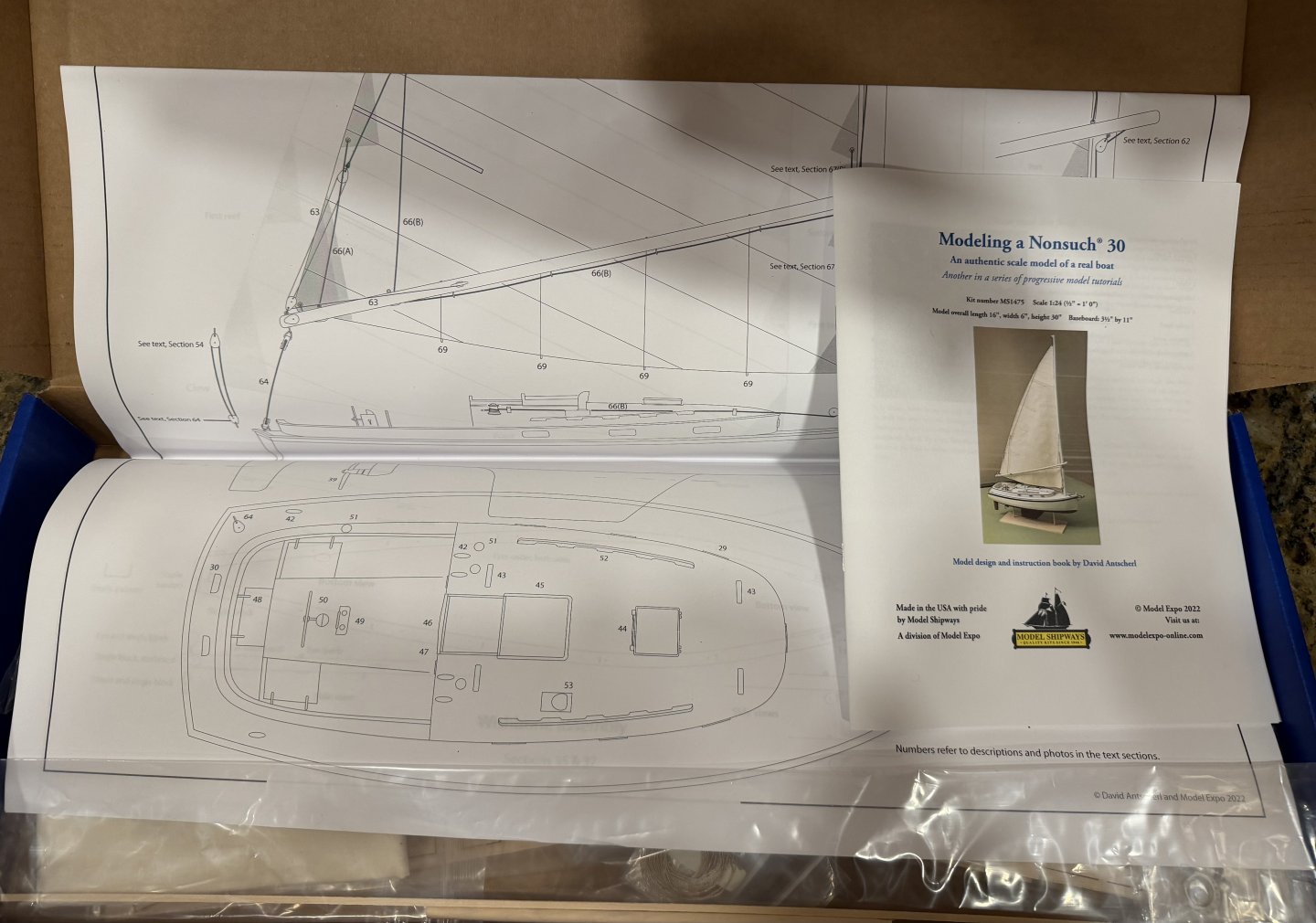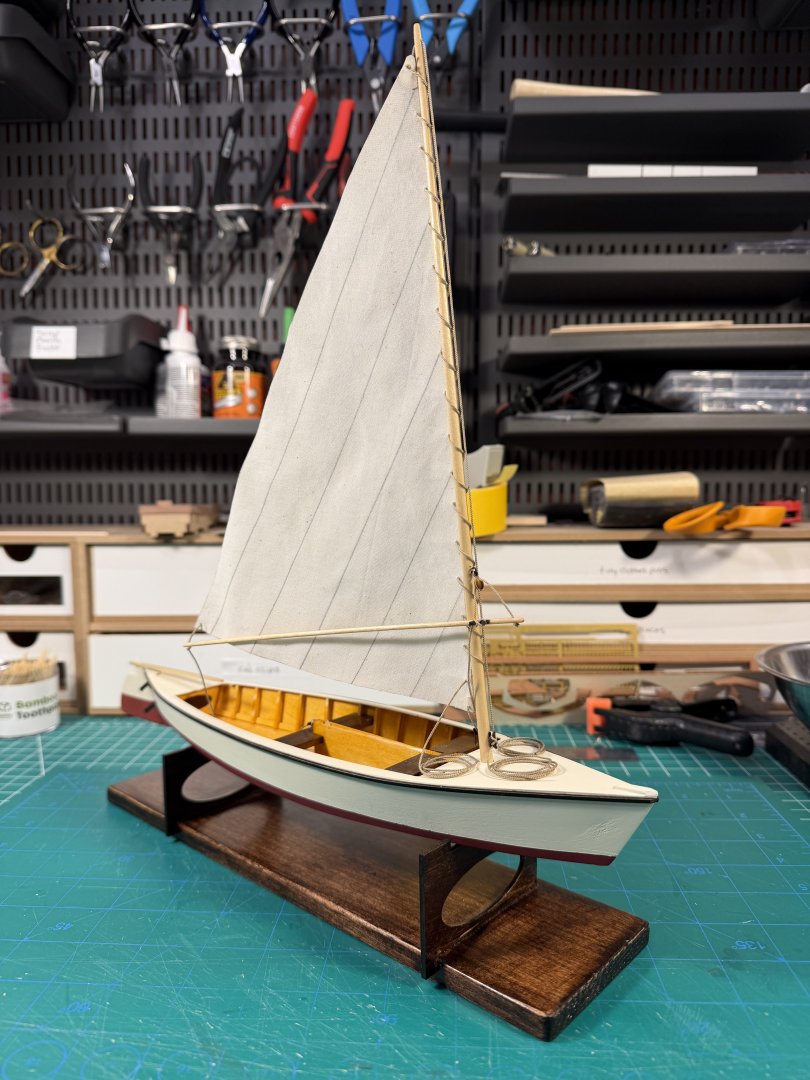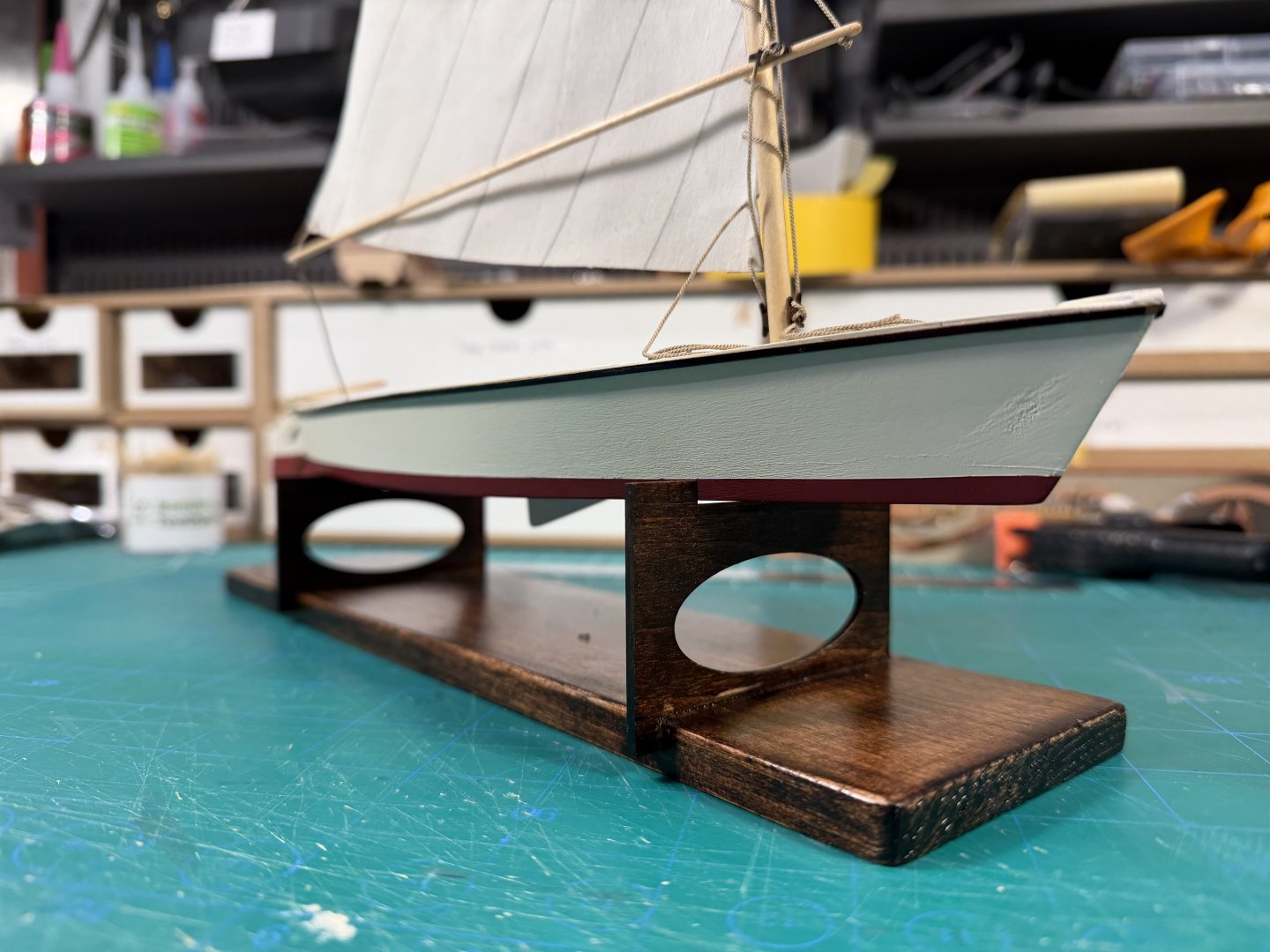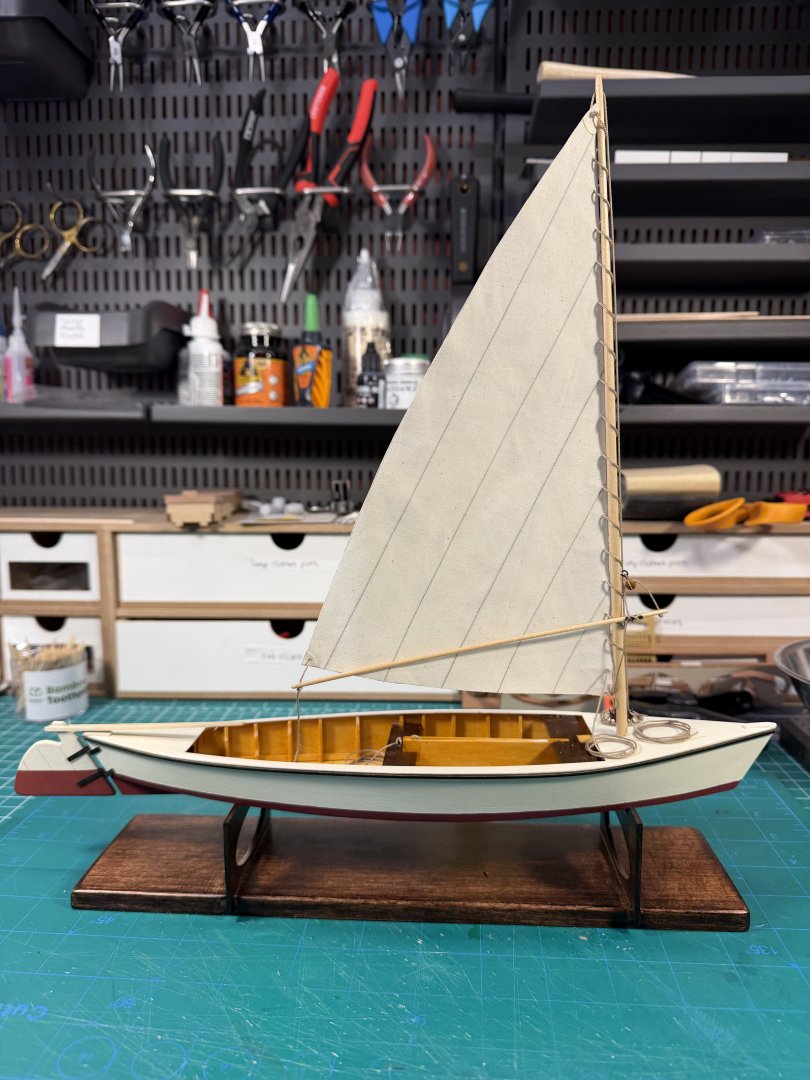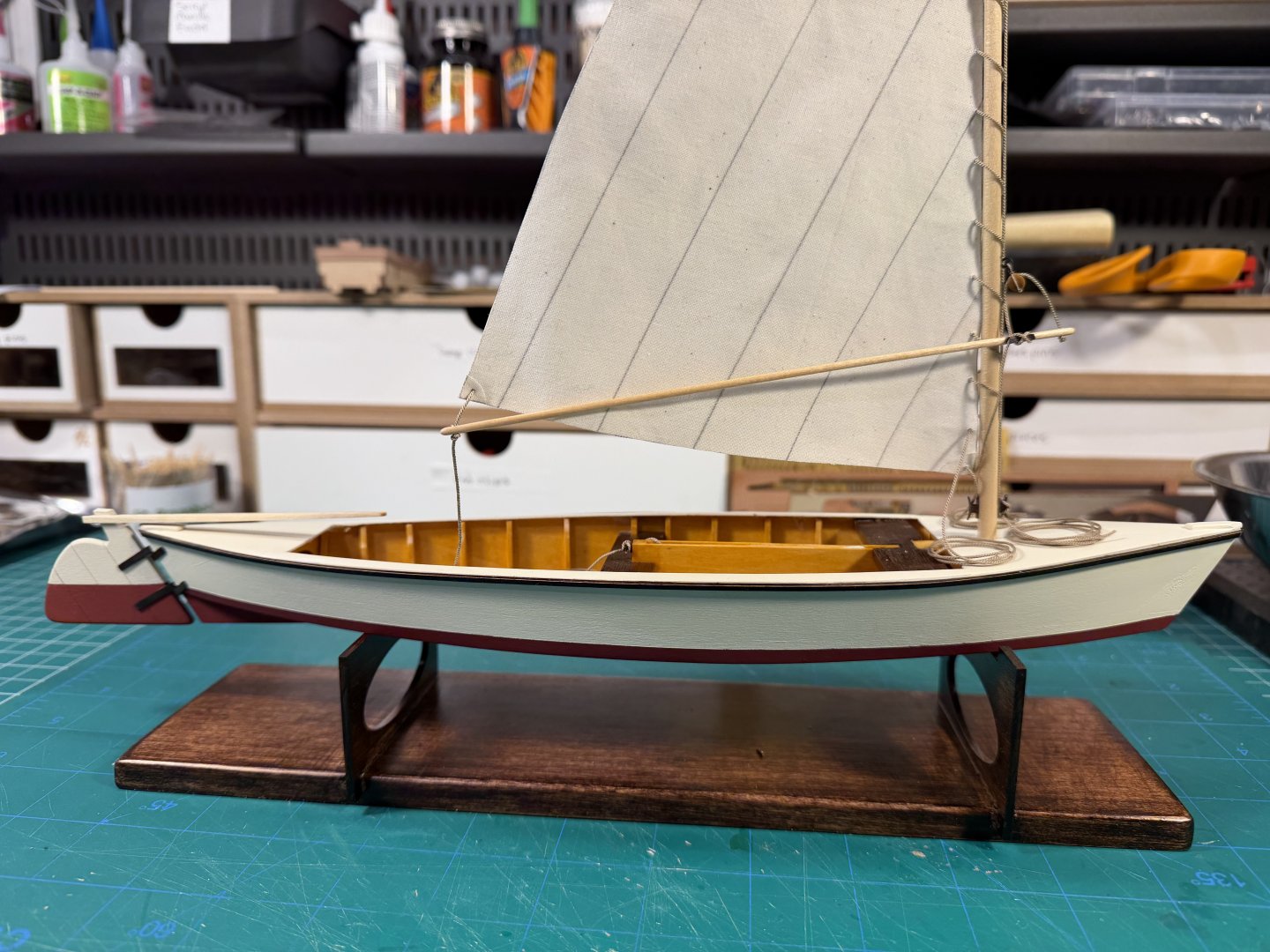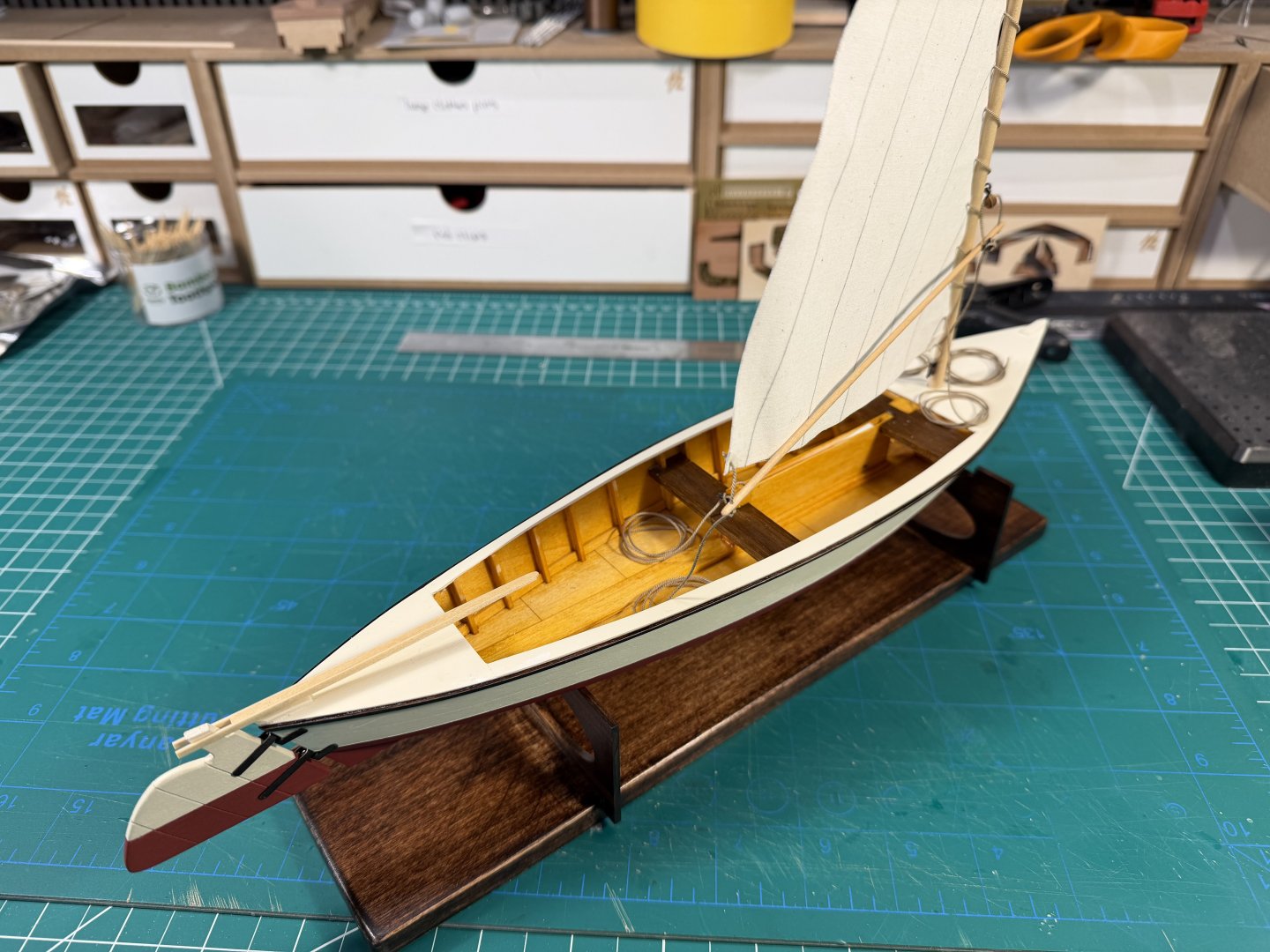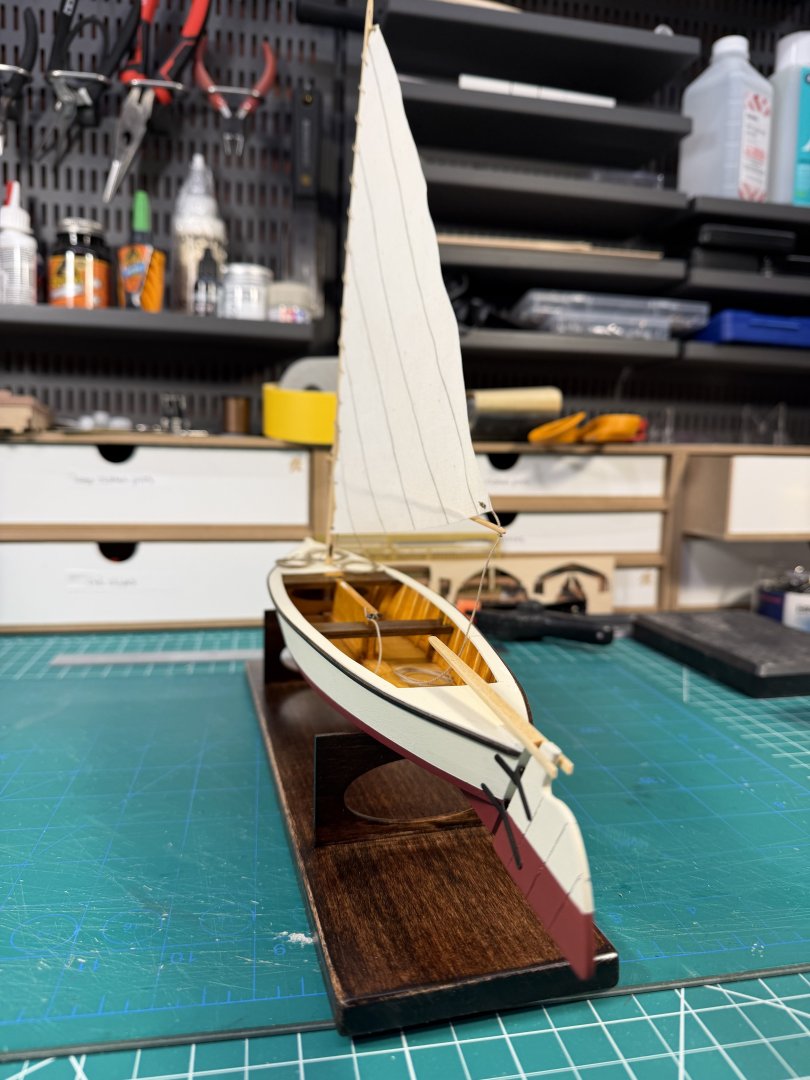
palmerit
NRG Member-
Posts
1,068 -
Joined
-
Last visited
About palmerit

Profile Information
-
Location
Nashville, TN, USA
Recent Profile Visitors
-
 palmerit reacted to a post in a topic:
His Britannic Majesty's Cutter Sherbourne 1763 - Paul White - Vanguard Models - 1:64
palmerit reacted to a post in a topic:
His Britannic Majesty's Cutter Sherbourne 1763 - Paul White - Vanguard Models - 1:64
-
 Nightdive reacted to a post in a topic:
HM Armed Cutter Sherbourne 1763 by palmerit - FINISHED - Vanguard Models - 1:64 - First Build
Nightdive reacted to a post in a topic:
HM Armed Cutter Sherbourne 1763 by palmerit - FINISHED - Vanguard Models - 1:64 - First Build
-
 Nightdive reacted to a post in a topic:
HM Armed Cutter Sherbourne 1763 by palmerit - FINISHED - Vanguard Models - 1:64 - First Build
Nightdive reacted to a post in a topic:
HM Armed Cutter Sherbourne 1763 by palmerit - FINISHED - Vanguard Models - 1:64 - First Build
-
 Nightdive reacted to a post in a topic:
HM Armed Cutter Sherbourne 1763 by palmerit - FINISHED - Vanguard Models - 1:64 - First Build
Nightdive reacted to a post in a topic:
HM Armed Cutter Sherbourne 1763 by palmerit - FINISHED - Vanguard Models - 1:64 - First Build
-
 Nightdive reacted to a post in a topic:
HM Armed Cutter Sherbourne 1763 by Nightdive - Vanguard Models - 1:64 - First Build
Nightdive reacted to a post in a topic:
HM Armed Cutter Sherbourne 1763 by Nightdive - Vanguard Models - 1:64 - First Build
-
 Ian_Grant reacted to a post in a topic:
Benjamin W Latham by Fundysnapper - Model Shipways - 1:48
Ian_Grant reacted to a post in a topic:
Benjamin W Latham by Fundysnapper - Model Shipways - 1:48
-
 Admiral Rick reacted to a post in a topic:
Newbie wannabe!
Admiral Rick reacted to a post in a topic:
Newbie wannabe!
-
 Ryland Craze reacted to a post in a topic:
hello moderator just made a signature mistake
Ryland Craze reacted to a post in a topic:
hello moderator just made a signature mistake
-
 Ryland Craze reacted to a post in a topic:
Benjamin W Latham by Fundysnapper - Model Shipways - 1:48
Ryland Craze reacted to a post in a topic:
Benjamin W Latham by Fundysnapper - Model Shipways - 1:48
-
 Paul White reacted to a post in a topic:
HM Armed Cutter Sherbourne 1763 by palmerit - FINISHED - Vanguard Models - 1:64 - First Build
Paul White reacted to a post in a topic:
HM Armed Cutter Sherbourne 1763 by palmerit - FINISHED - Vanguard Models - 1:64 - First Build
-
 Paul White reacted to a post in a topic:
HM Armed Cutter Sherbourne 1763 by palmerit - FINISHED - Vanguard Models - 1:64 - First Build
Paul White reacted to a post in a topic:
HM Armed Cutter Sherbourne 1763 by palmerit - FINISHED - Vanguard Models - 1:64 - First Build
-
 palmerit reacted to a post in a topic:
Nonsuch 30 by palmerit - Model Shipways - 1:24
palmerit reacted to a post in a topic:
Nonsuch 30 by palmerit - Model Shipways - 1:24
-
 palmerit reacted to a post in a topic:
Newbie wannabe!
palmerit reacted to a post in a topic:
Newbie wannabe!
-
Starting on the frame. This kit is oddly made in half hulls that are later glued together. The Nonsuch is a fiberglass hull, which the instructions say is why the hull can be assembled this way - lots of filler and sanding will later be done for a smooth hull.
- 3 replies
-
- Nonsuch 30
- Nonsuch
-
(and 1 more)
Tagged with:
-
Not sure how you have your signature formatted. If you have a raw html address the web site might be auto-formatting to show a snapshot of the log. If you're editing your signature, you should just be able to delete the web address (or the snapshop of the log) and then use the link formatting in the signature editor. (Give my experience editing web sites - the view of your log is being generated by the web site - it's not actually in your signature. If you "delete the log" in your signature you're likely just deleting the web address.) Try not putting the full web address, but use the "link" formatting command to add the link to some text.
-
 palmerit reacted to a post in a topic:
1:48 La Renommée 1744 - CAF Model
palmerit reacted to a post in a topic:
1:48 La Renommée 1744 - CAF Model
-
 palmerit reacted to a post in a topic:
Chesapeake Bay Crabbing Skiff by palmerit - FINISHED - Midwest Products - 1:20
palmerit reacted to a post in a topic:
Chesapeake Bay Crabbing Skiff by palmerit - FINISHED - Midwest Products - 1:20
-
 palmerit reacted to a post in a topic:
Nonsuch 30 by palmerit - Model Shipways - 1:24
palmerit reacted to a post in a topic:
Nonsuch 30 by palmerit - Model Shipways - 1:24
-
 palmerit reacted to a post in a topic:
Chesapeake Bay Crabbing Skiff by palmerit - FINISHED - Midwest Products - 1:20
palmerit reacted to a post in a topic:
Chesapeake Bay Crabbing Skiff by palmerit - FINISHED - Midwest Products - 1:20
-
 palmerit reacted to a post in a topic:
Chesapeake Bay Crabbing Skiff by palmerit - FINISHED - Midwest Products - 1:20
palmerit reacted to a post in a topic:
Chesapeake Bay Crabbing Skiff by palmerit - FINISHED - Midwest Products - 1:20
-
This model is from David Antscherl. Among so many other things, he designed the Model Shipways Shipwright Series kits (Dory, Pram, Smack). This Nonsuch 30 is a more modern sailboat as "Another in a series of progressive model tutorials". I bought it last year during a deep Model Expo sail for 1/2 price as a model to follow up on the Shipwright boats I completed last year. I'm going to try to finish a couple of the other models I'm working on in parallel, but I am opening this one up early because sometimes I just want to do some sanding and gluing. This is a fairly new model kit compared to other Model Shipways kits, having come out in 2022.
- 3 replies
-
- Nonsuch 30
- Nonsuch
-
(and 1 more)
Tagged with:
-
 palmerit reacted to a post in a topic:
Chesapeake Bay Crabbing Skiff by palmerit - FINISHED - Midwest Products - 1:20
palmerit reacted to a post in a topic:
Chesapeake Bay Crabbing Skiff by palmerit - FINISHED - Midwest Products - 1:20
-
- 38 replies
-
- crabbing skiff
- Chesapeake Bay crabbing skiff
- (and 2 more)
-
 palmerit reacted to a post in a topic:
1:48 La Renommée 1744 - CAF Model
palmerit reacted to a post in a topic:
1:48 La Renommée 1744 - CAF Model
-
kit review 1:48 La Renommée 1744 - CAF Model
palmerit replied to James H's topic in REVIEWS: Model kits
I’m curious - as in just curious since a model like this is far beyond me - would someone ever fully rig a model of this scale and if so would there be plans available to guide that? Or is this model just intended as an admiralty style model?- 16 replies
-
- cafmodel
- la renommee
-
(and 1 more)
Tagged with:
-
For some of us, that was out of necessity 🙂 Sherbourne was my first model with real planking and that first attempt was absolute garbage. 1/2 strip planks, 1/2 wood filler with tons of sanding. Lots of coats of paint just to hide my sins.
- 18 replies
-
- Sherbourne
- Vanguard Models
-
(and 1 more)
Tagged with:
-
Another option for a child as a gradual introduction to wooden models is a model by UGEARS (https://ugearsmodels.com). No glue, no shaping, more like lego than model shipbuilding, but wood. A few of their models are trains and ships: https://ugearsmodels.com/collections/all?filter.p.m.custom.topic=Trains+and+Ships
-
I don’t know, the first post was asking what the oldest book on ship modeling was. The one I saw in the Art Gallery of Ontario might be one of the oldest. The photo of the book was included in a post about their model ship collection, which included this book. The text of that book is available online if anyone is interested: https://quod.lib.umich.edu/e/eebo2/A50859.0001.001?rgn=main;view=fulltext
-
Cutters, Choppers, Guillotines, Slicers
palmerit replied to MintGum's topic in Modeling tools and Workshop Equipment
One thing I've seen - can't remember where, maybe I'm misremembering - is that with some of the cheaper cutters that are made out of less study materials, the blade (the blade itself being just a razor instead of an upholstery blade) and the arm can bend a bit when cutting thicker material, which could produce a less than clean cut. With the Ultimation, I think the need to do two cuts with thicker stock is just a property of the material itself (not the cutter); not quite sure the physics (or biology, being wood) but I would think that the second cut makes a cleaner cut (on thicker stock) because now that small (<mm) end you're cutting off is just tiny strands of wood fiber (so the ones on the cut off end deform rather than the ones on the long end you're keeping). That's why I'd think the same issue (perhaps compounded) would be true for other cutters. I haven't tested and don't know the precise physics/biology/botany at work. -
Cutters, Choppers, Guillotines, Slicers
palmerit replied to MintGum's topic in Modeling tools and Workshop Equipment
I think that's a peculiarity of this kit / this manufacturer. In kits I've built with strips and dowels so far it's never been the case that I have to precisely cut those pieces up into 1/3s or 1/4s with no wiggle room. They're always longer (and there's more) than I've needed (with few exceptions) - but I've only built Vanguard, Model Shipways, Midwest kits so far. I've always ended up with extra bits of strips and dowels. Maybe that's not true with other manufacturers.
About us
Modelshipworld - Advancing Ship Modeling through Research
SSL Secured
Your security is important for us so this Website is SSL-Secured
NRG Mailing Address
Nautical Research Guild
237 South Lincoln Street
Westmont IL, 60559-1917
Model Ship World ® and the MSW logo are Registered Trademarks, and belong to the Nautical Research Guild (United States Patent and Trademark Office: No. 6,929,264 & No. 6,929,274, registered Dec. 20, 2022)
Helpful Links
About the NRG
If you enjoy building ship models that are historically accurate as well as beautiful, then The Nautical Research Guild (NRG) is just right for you.
The Guild is a non-profit educational organization whose mission is to “Advance Ship Modeling Through Research”. We provide support to our members in their efforts to raise the quality of their model ships.
The Nautical Research Guild has published our world-renowned quarterly magazine, The Nautical Research Journal, since 1955. The pages of the Journal are full of articles by accomplished ship modelers who show you how they create those exquisite details on their models, and by maritime historians who show you the correct details to build. The Journal is available in both print and digital editions. Go to the NRG web site (www.thenrg.org) to download a complimentary digital copy of the Journal. The NRG also publishes plan sets, books and compilations of back issues of the Journal and the former Ships in Scale and Model Ship Builder magazines.









